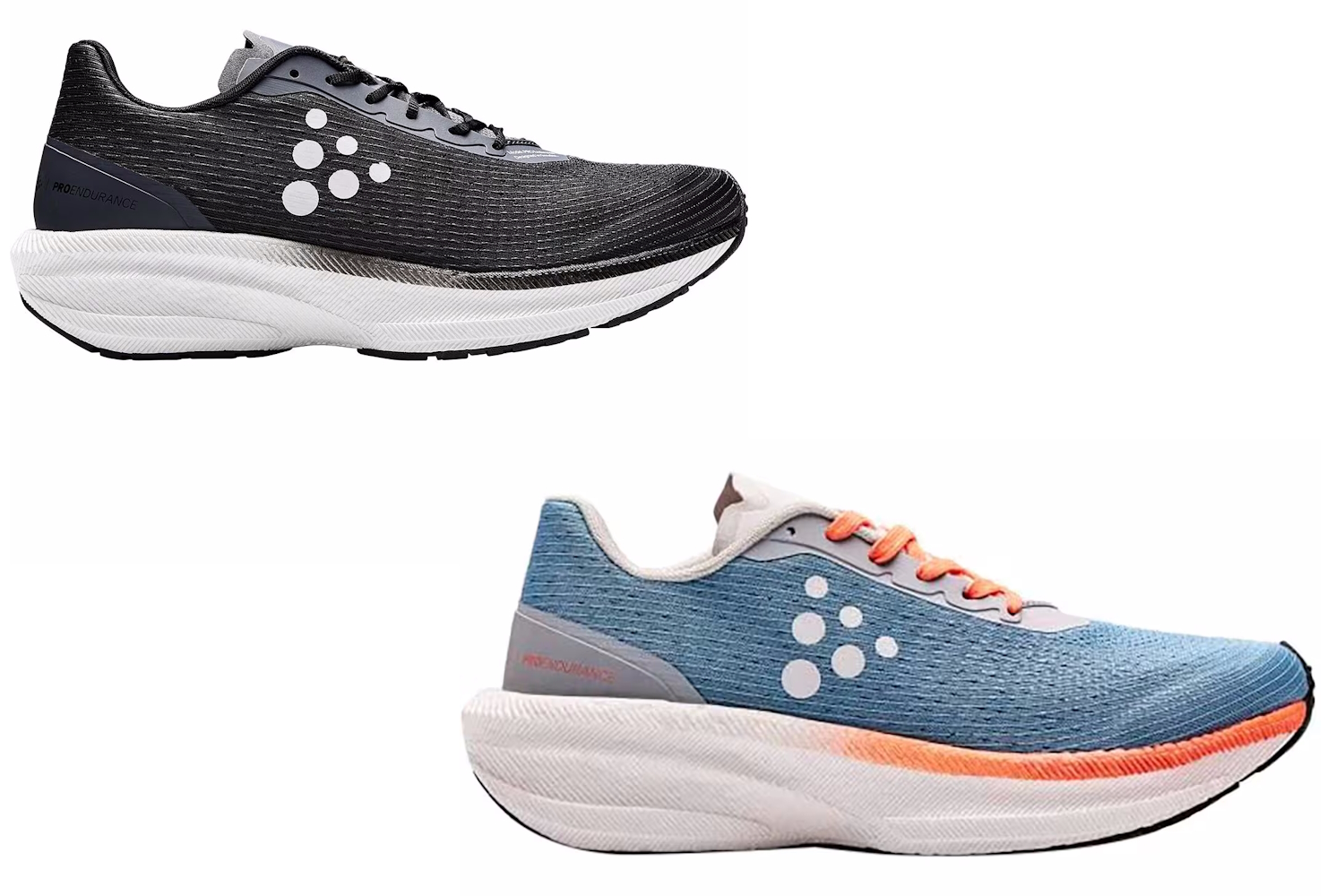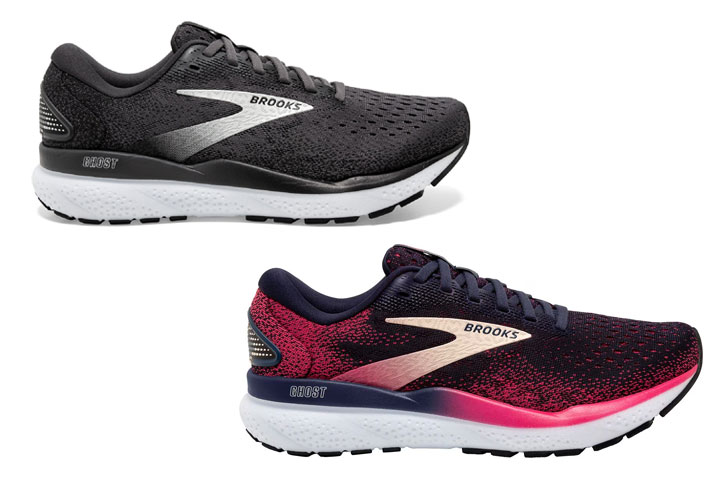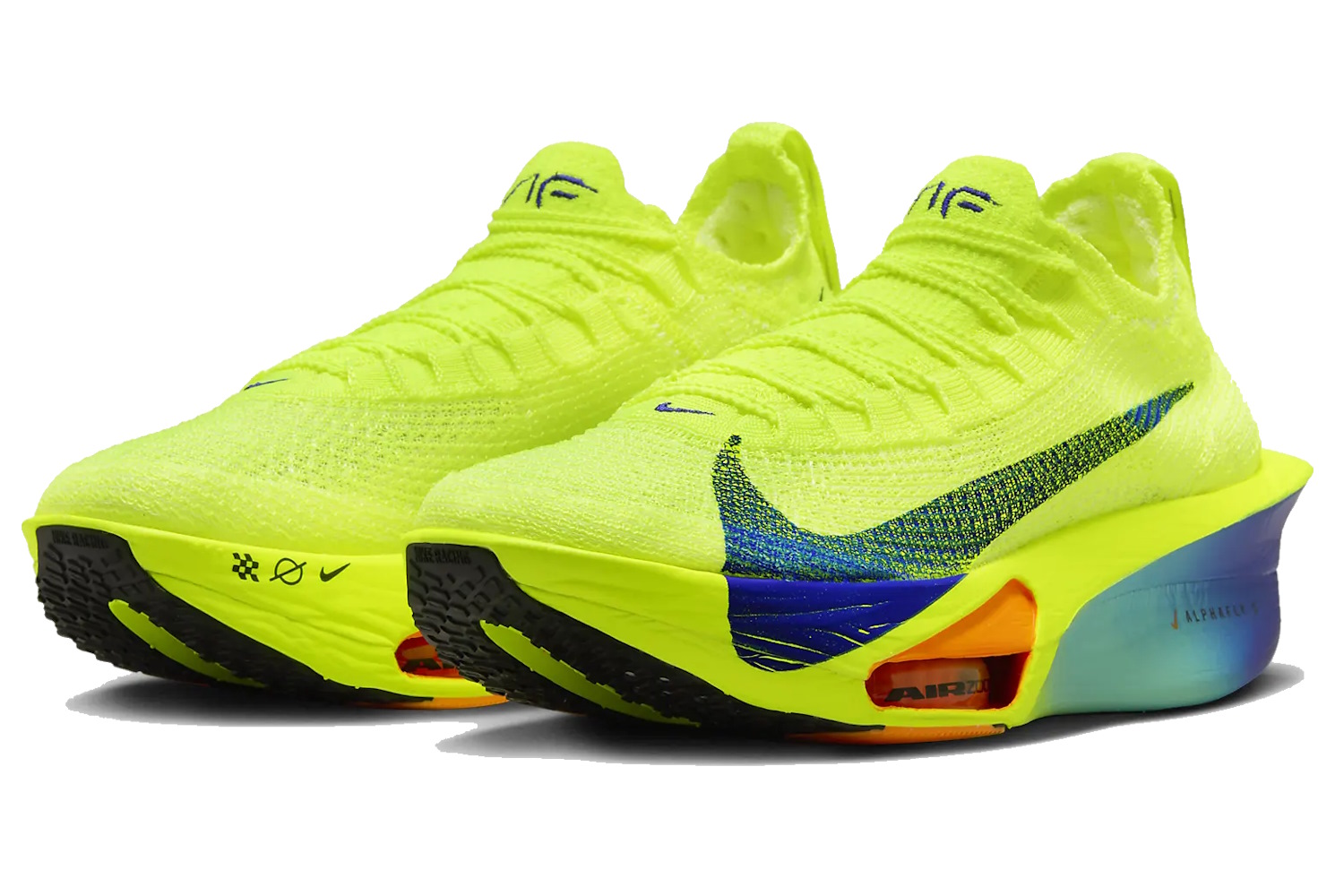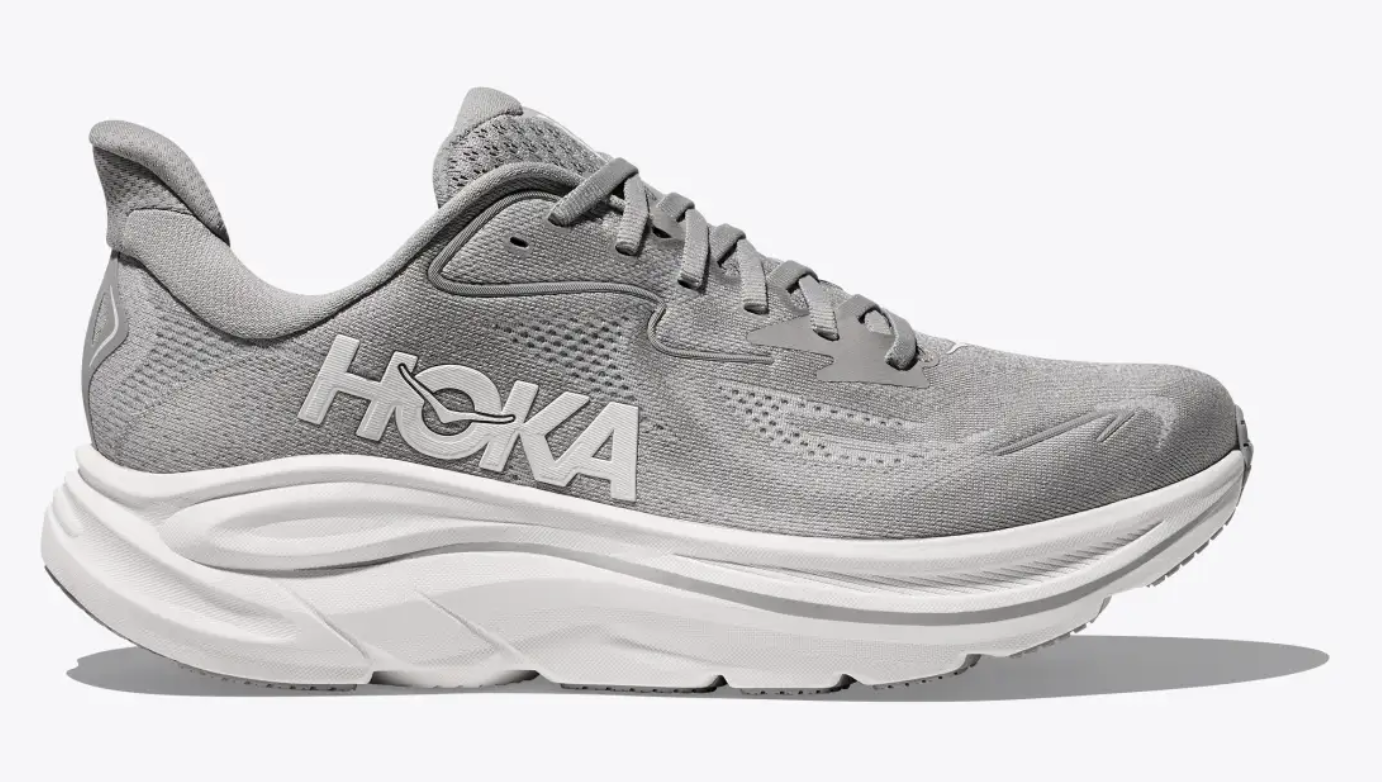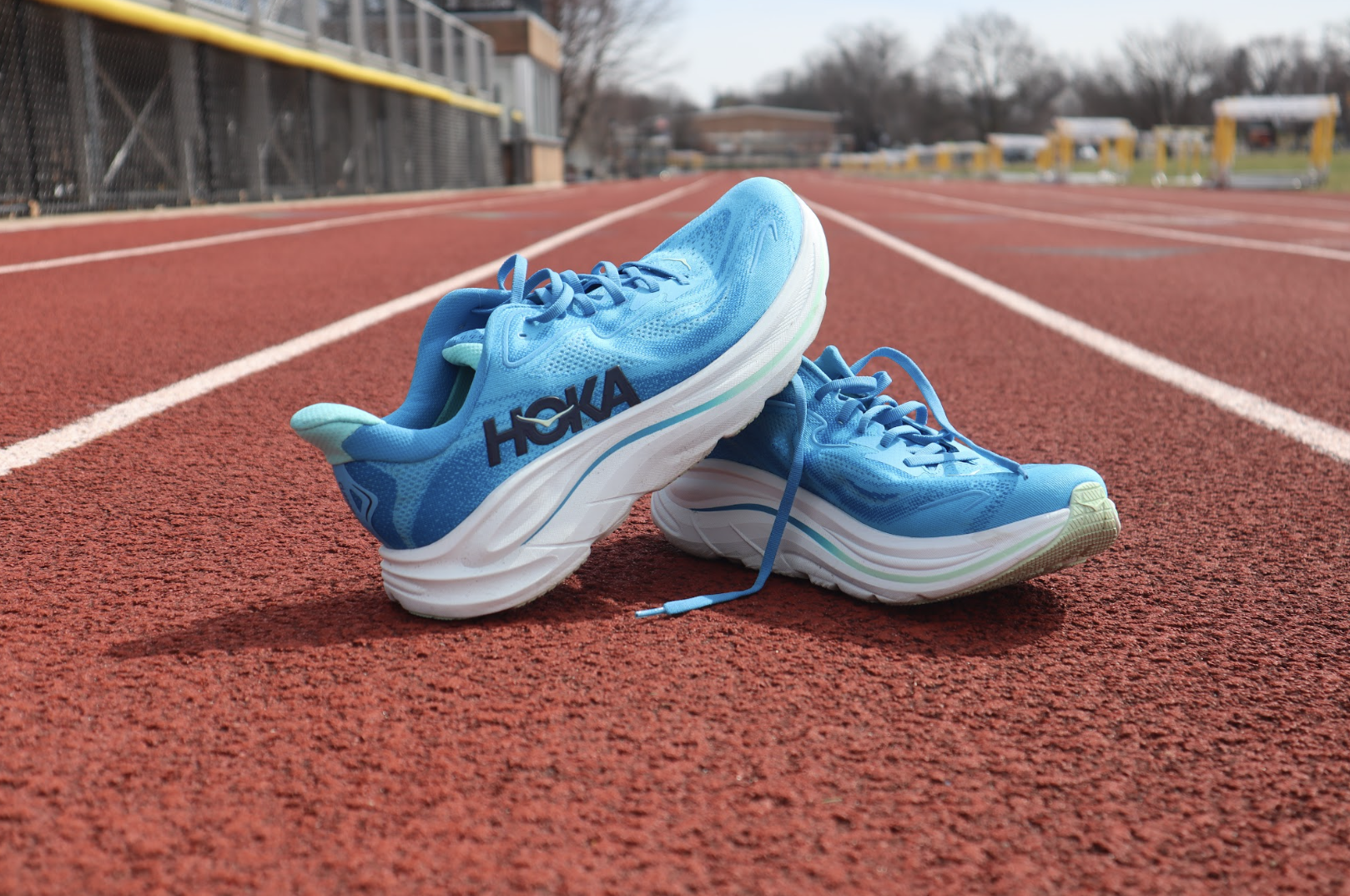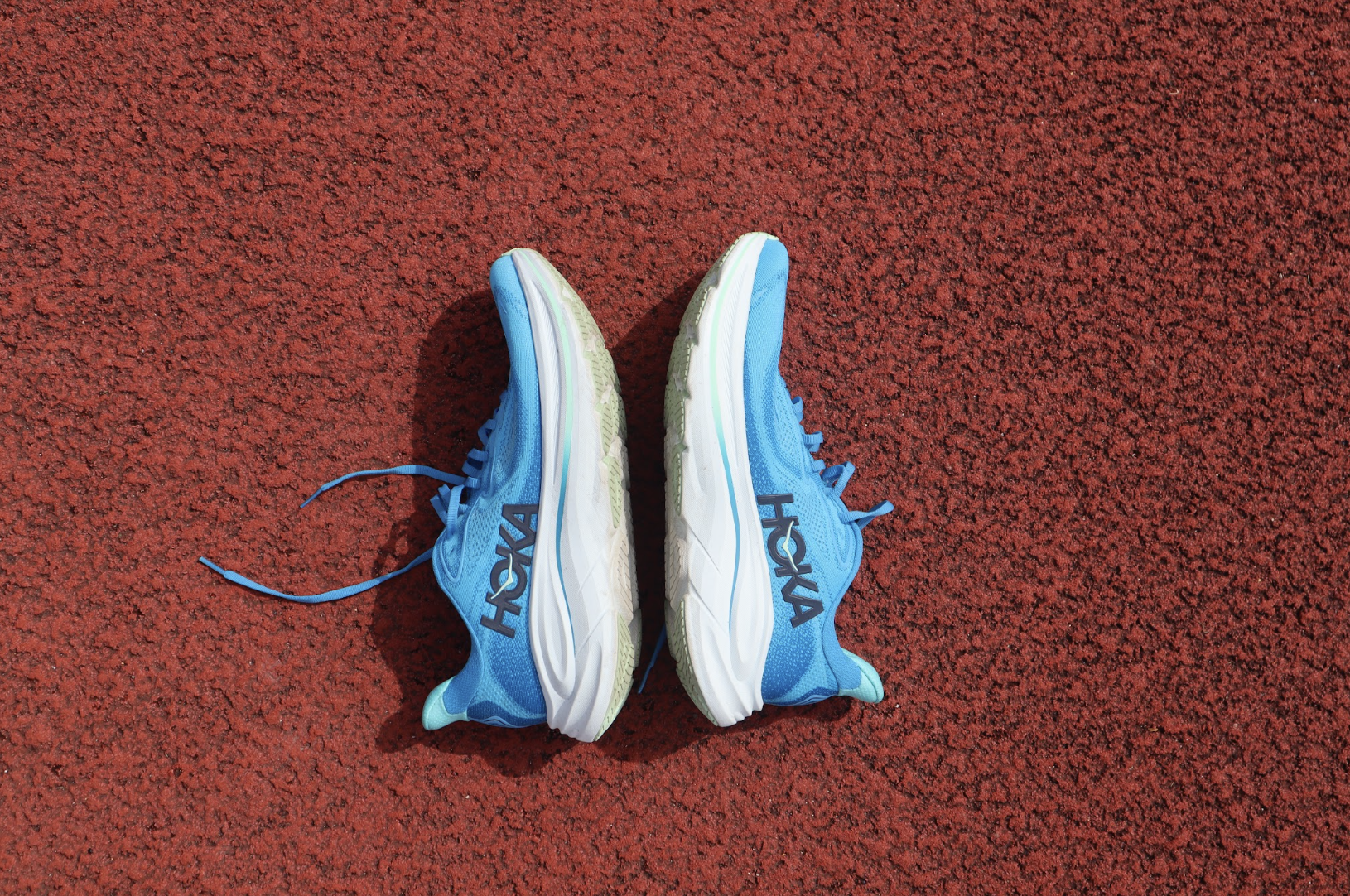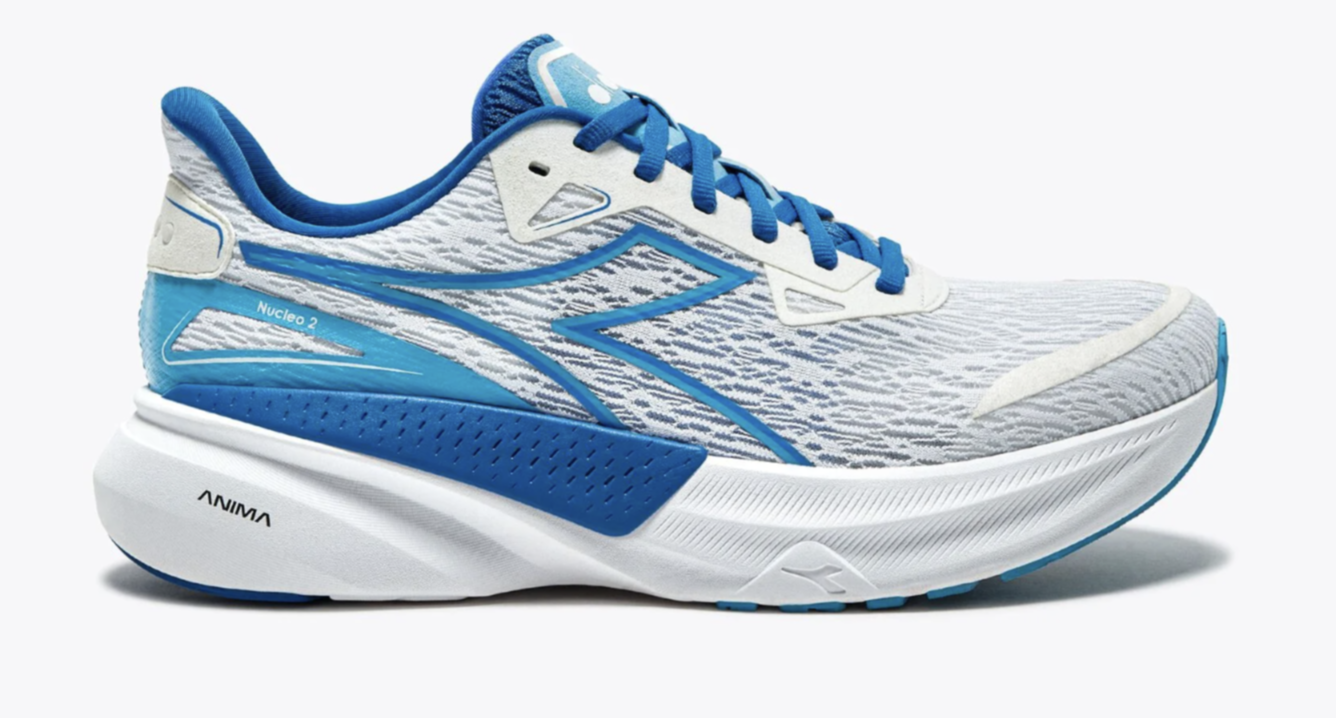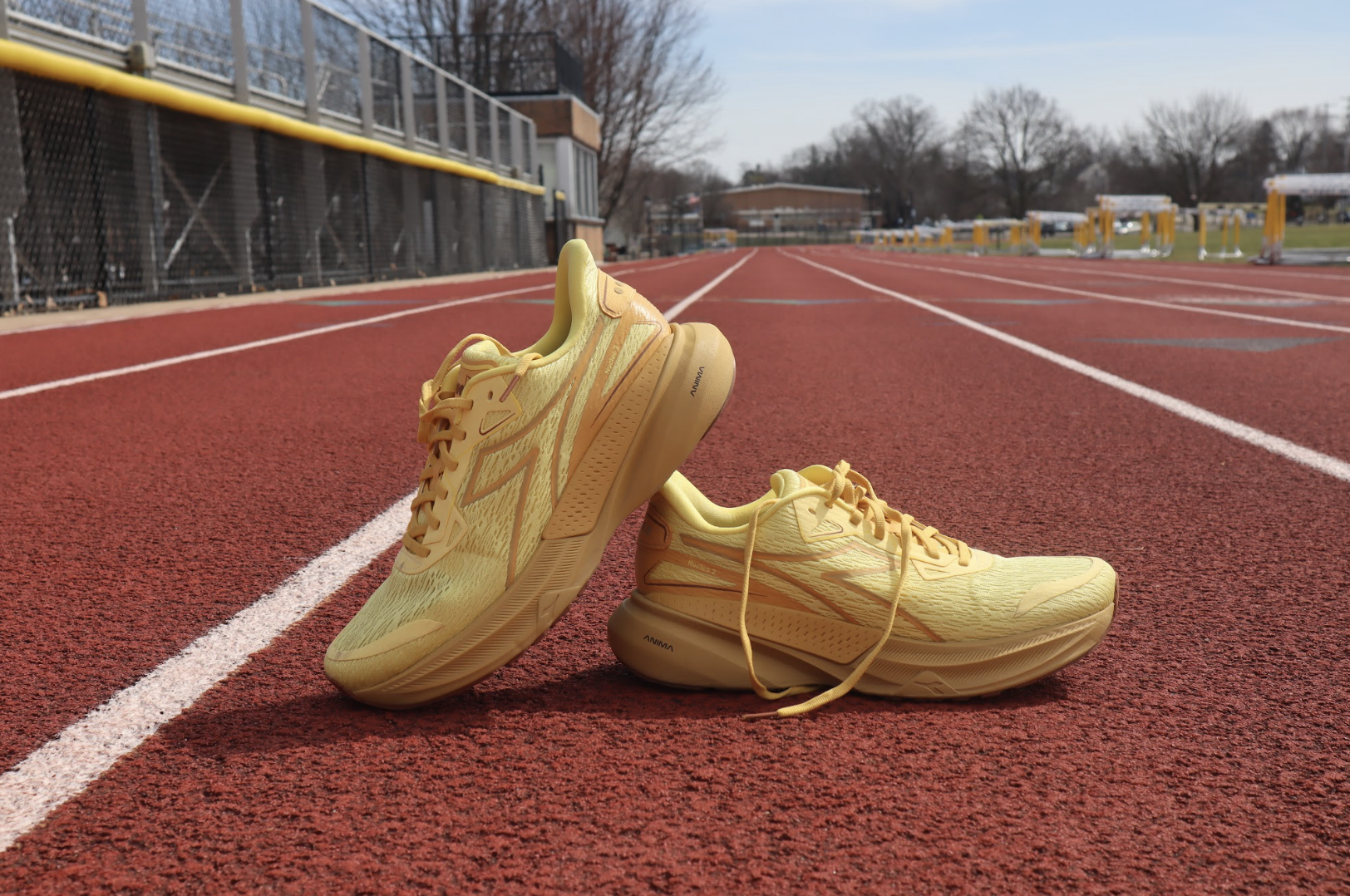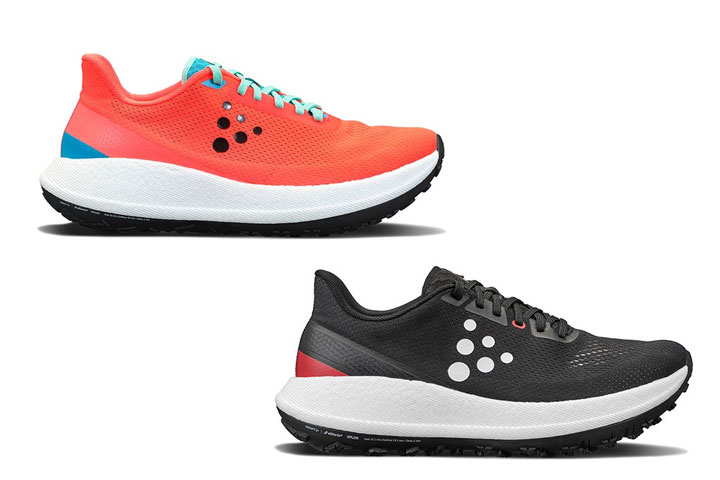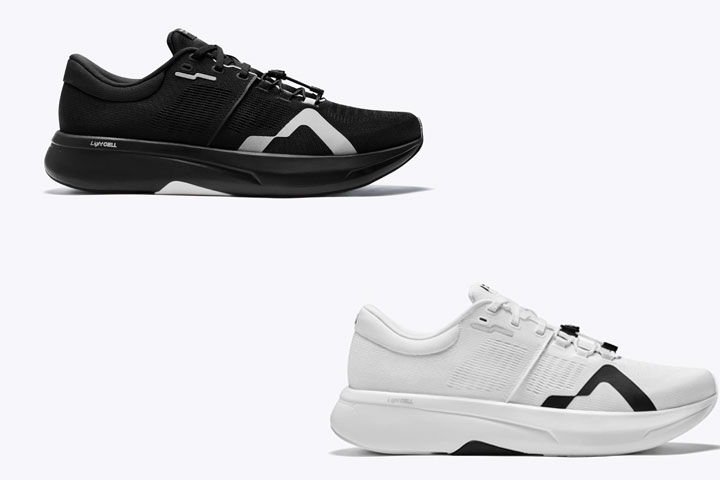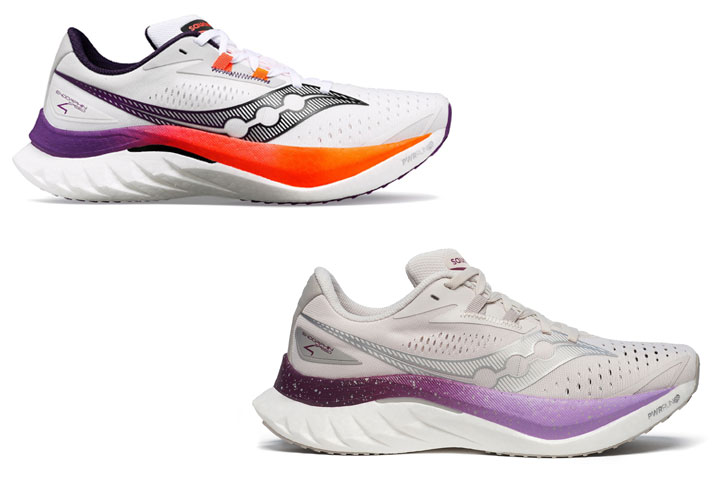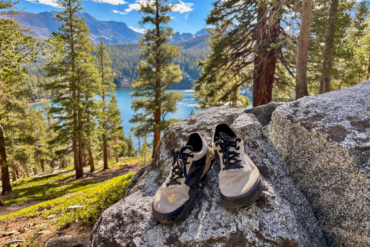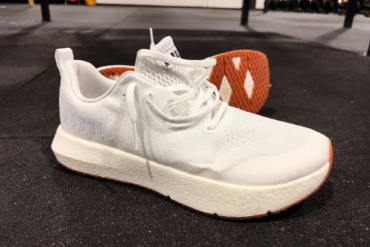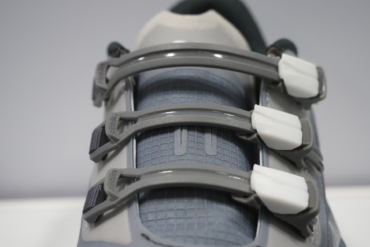A good pair of shoes is the only thing you really need to start running. Runners don’t need much more gear. That puts a premium on finding the best shoes for your specific needs.
Our team of testers put the shoes on the list through the paces, including short speed workouts, run commutes, heart-rate spiking interval training, and long weekend runs. We faithfully logged steps and notes on each shoe listed here. So whether you’re a recreational runner lacing up for a family 5K or a competitive marathoner, we have the best running shoe for you.
Editor’s Note: This guide gets a makeover several times a year to keep on top of the most current running shoes. Updated on April 15, 2025, we now cover the new HOKA Clifton 10 and the supportive Diadora Nucleo 2.
The Best Running Shoes of 2025
Craft PRO Endur Distance
- Weight: 8.3 oz. (men)/6.4 oz. (women)
- Stack Height: 36 mm/30 mm
- Drop: 5 mm
Pros
- Solid shock absorption
- Lively midsole
- Lightweight
Cons
- Upper is a bit thin
Brooks Ghost 16
- Weight: 9.5 oz. (men) / 8.5 oz. (women)
- Stack Height: 35mm / 23mm
- Drop: 12 mm
Pros
- Comfort paired with neutral cushioning
- DNA Loft v2 results in soft, consistent ride
- Carbon neutral (recycled content + offsets)
- Great all-rounders for training and race day
Cons
- Slightly heavier than competitors
- May not be able to compete with race day “supershoes”
- Running-specific construction, not cross-training capable
Nike Alphafly 3
- Weight: 198 g (men)/ 174 g (women)
- Stack height: 40 mm / 32 mm
- Drop: 8 mm
Pros
- Incredible energy return
- Higher durability than the previous iterations
- Efficient rocker geometry
Cons
- Narrow-ish midfoot
- Expensive
- Not a great everyday running shoe
HOKA Clifton 10
- Weight: 9.8 oz.
- Stack height: 27mm/36mm
- Drop: 8mm
Pros
- Remains the king of max cushioning
- Redesigned fit increases speedwork potential
- Excellent recovery run shoe
Cons
- Heavier than the previous version
- Midsole wears out quicker than non-max cushioning shoes
Diadora Nucleo 2
- Weight: 9.7 oz.
- Stack height: 30mm/35mm
- Drop: 5mm
Pros
- Supportive cushioned ride
- Midsole geometry supports stride without over-correcting
- Durable materialization
Cons
- Shoes have some break in time
- Heavier than other models
More Running Shoes We Like
While the shoes listed above are the best running shoes you can buy, there are thousands of great shoes on the market. Among those hundreds we’ve tested, we love the running shoes below, too. If you like their vibe and fit, don’t hesitate to slide on a pair and give them a run!
- Weight: 10.2 oz. (men)/8.5 oz. (women)
- Stack height: 40 mm/34 mm (men) 39 mm/33 mm (women)
- Drop: 6 mm
Pros
- Burly traction for trail sections
- Balanced cushion for road responsiveness + trail protections
- Very breathable
Cons
- Lightweight upper has lockdown problems
- Weight: 8.5 oz (men)
- Stack: 35 mm/27 mm
- Drop: 8 mm
Pros
- Zero break-in period
- Excellent blend of spring and support
- Extremely durable midsole
- Shockingly lightweight
Cons
- Not ideal for barefoot-style runners
- Some may prefer louder colorways
- Weight: 8.2 oz. (men)/7.2 oz. (women)
- Stack height: 36 mm/28 mm
- Drop: 8 mm
Pros
- Flexible nylon plate delivers good energy return with more flexibility than a carbon fiber plate
- Smooth, cushioned ride
Cons
- Not the most stable, supportive shoe
- Weight: 7.2 oz. (unisex)
- Stack height: 33 mm/28 mm
- Drop: 5 mm
Pros
- Great energy return with a carbon fiber plate
- Solid flexibility
- Good stability
Cons
- Current iteration a bit heavier than before
- Pricey
Running Shoe Comparison Chart
| Running Shoe | Price | Weight | Stack Height | Drop |
|---|---|---|---|---|
| Craft PRO Endur Distance | $155 | 8.3 oz. | 36 mm/30 mm | 6 mm |
| Brooks Ghost 16 | $140 | 9.5 oz. | 35mm / 23mm | 12 mm |
| Nike Alphafly 3 | $285 | 7 oz. | 40 mm/32mm | 8 mm |
| HOKA Clifton 10 | $150 | 9.8 oz. | 33 mm/27 mm | 5 mm |
| Diadora Nucleo 2 | $160 | 9.7 oz | 35 mm/30 mm | 5 mm |
| CRAFT Xplor | $140 | 10.2 oz. | 40 mm/34 mm | 6 mm |
| Mount to Coast R1 | $160 | 8.5 oz | 35mm/27mm | 8mm |
| Saucony Endorphin Speed 4 | $170 | 8.2 oz. | 36 mm/28 mm | 8 mm |
| Asics MetaSpeed Sky+ | $250 | 7.2 oz. | 33 mm/28 mm | 5 mm |

How We Tested Running Shoes
Our Expert Testers
Cory Smith led our initial rounds of testing. His passion for running started over 25 years ago in high school when he became the number six ranked runner in the nation in the 3 km his senior year. Ever since then, Cory’s been addicted to competitive running in every distance, from 1 mile to the marathon and trail racing. Today, he’s a full-time online running coach and running gear reviewer.
His obsession with running shoes started in 2014 when he wrote his first shoe review. Since then, he’s tested and reviewed hundreds of running shoes, clothing, and gear for GearJunkie and other outlets. He loves dissecting gear and thinking like a product engineer to explain the why behind every design and little detail of running shoes.
We brought in gear tester Matthew Medendorp to help update the guide in 2024. A runner who bounces between trails and tarmac, Medendorp never takes a trip without packing at least one pair of running shoes. Okay — more like three. These days, you can find him in the Midwest, grinding out weekly miles on the local running paths and behind a running stroller (a Thule Urban Glide 2 Double — since this is GearJunkie).
Our Testing Process
In 2024, we brought our running shoe finalists on two head-to-head testing trips. The first was in the thin air of Flagstaff, Ariz., where the amateurs and pros flock to train every season. The second to Mammoth Lakes, Calif., another high-altitude training ground for elite athletes (and humble gear-testers). With picturesque backdrops, we vetted the best shoes on pristine tarmac, sometimes swapping shoes mid-route to get a better comparison.
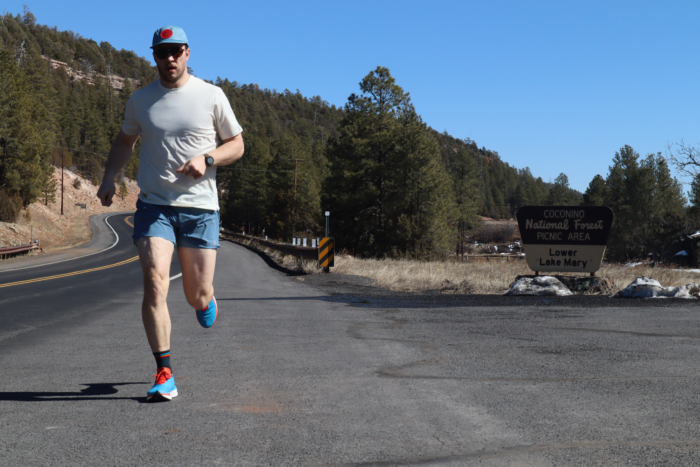
Every runner is different, so we also solicited feedback from a diverse group of runners. For this review, GearJunkie tasked a test team with logging miles and weighing in with their perspective as competitive runners, physical therapists, and former shoe designers.
We tested the latest shoes from every brand, and all testers were asked to rank each shoe numerically and write short-form reviews of the top-ranked shoes. Armed with our testers’ feedback and our own impressions, GearJunkie picked the best running shoe in the most popular shoe categories.
Buyer’s Guide: How to Choose the Best Running Shoe
Running shoes have their fair share of complexity. Sorting through today’s shoe stats like stack height, heel drop, weight, and now carbon fiber plates can give anyone a headache. Luckily, we’re here to cut through the noise and give it to you straight.
Over our years reviewing shoes, GearJunkie testers have run in just about every running shoe produced. More than that, we’ve recruited teams of testers for feedback and talked with shoe engineers, podiatrists, and specialty running store owners.
Armed with this knowledge, we’ve picked the best shoes of the season based on our editors and test team’s input paired with head-to-head comparisons.
It’s worth noting that this guide focuses specifically on road running shoes. Be sure to check out our exhaustive guides on the best trail running shoes and the best hiking shoes — if that’s more your pace.
Comfort Is King

After talking with many physical therapists, running store owners, and shoe experts, they all agree on one thing — pick a running shoe based on comfort. The shoe that feels, fits, and runs the best is most likely going to be the best shoe for you.
Fortunately, most of today’s online shoe retailers allow a full refund or credit on used shoes within a 30- or 90-day window. This allows you to buy a pair of shoes, try them out for a few runs, and make the decision. This is also a nice feature to ensure that you get the correct sizing.
Sizing Properly
In our experience, most people wear running shoes that are too tight. The rule of thumb (literally) is you should have a thumb-width of space between your longest toe and the edge of the running shoe. For most, this will be half to three-quarters of an inch.
You need this space for two reasons. First, as you run, your feet will slide slightly forward. This extra space prevents your toes from consistently banging up against the inside wall of the shoe. Second, if you run long enough and in higher temps, your feet will swell. Again, extra space is necessary.
The thumb’s width rule is a great way to size your shoe while accounting for how much your feet may swell during a long run.

Finding the proper width is a little trickier. Shoe width varies from brand to brand and even within the same brand between models. There are brands that are known for being wide or narrow.
Altra and Topo are known for favoring runners with wide feet. Aside from these two, it’s hard to make absolute assumptions across all models of a brand as being wide or narrow.
The Details: Stack Height, Drop, and Weight
If you want to geek out on the stats of a shoe, that’s fine. But we would steer clear of making decisions solely based on them. Pay attention but don’t obsess.
Sure, there is a pretty big difference between a 12mm drop and zero drop, so much so that I don’t suggest making such a drastic change. But between a 4mm and 6mm drop, it’s marginal. To put it in perspective, it’s the difference in the thickness of a nickel.

Stack Height
This is usually the measurement of the bottom of the shoe to the bottom of the inside of the shoe. It gives a measurement of how much material there is between your foot and the ground.
The higher the stack height, the thicker the sole. We say “usually” because some brands will not include the insole as part of the stack height measurements.
Drop
Drop is the difference in measurement of stack height between the heel and toe. It ranges from zero to 12 mm. The higher the drop, the less strain on the Achilles, soleus, and calves. Zero-drop shoes are associated with a more natural barefoot running feeling.
Weight
The weight of a shoe can give a good insight into the type of running for which the shoe is best suited. Lightweight shoes — ones weighing less than 8 ounces for men and 7.5 ounces for women — are typically designed for faster running and racing.
Heavier shoes — 10 ounces for men and 9 ounces for women — are more suited for everyday training. In most cases, we’ve found weight to be a good insight into the durability of a shoe. Lighter shoes with less foam tend to wear out more quickly than the thicker, heavier ones.
Neutral vs. Supportive
Should a shoe correct over/underpronation or not? Some say yes; others say no. Most of the experts we’ve spoken with say it depends. Dr. Crispell recommends that those needing a supportive shoe look for “a sturdy heel cup, multi-density EVA midsoles, and a mid-foot truss or bridge that stabilizes the shoe.”
Bottom line: Comfort is king, and if you’re still unsure, we recommend taking a trip to your local specialty running store to get their advice. With proper footwear and proper training, you, too, can pound out the miles on the pavement in relative comfort.
More Than One Pair
Do you really need more than one pair of running shoes? Think of it this way — do you really need more than one pair of shoes in general? Technically, no. But if you start to pull away the layers, you have work shoes, workout shoes, comfortable shoes, slippers, flip-flops, etc.
Just like all your other shoes, running shoes perform best in certain scenarios. For example, the HOKA Clifton 10 makes a great recovery run shoe but not so much a great speed workout shoe. On the flip side, a carbon fiber shoe makes a great race day shoe but not a great recovery run shoe.
One solution is to own at least three pairs of road running shoes: a durable everyday trainer, a speed or race day shoe, and one super-comfortable recovery run shoe. By rotating between shoes, you’ll be less likely to get overuse injuries from your shoe.

Price & Value
If you’ve been running for a while, you know that running shoes sure haven’t gotten any cheaper over the years. Fortunately, there’s a relatively wide range of prices to suit different budgets. While you may sacrifice some features when opting for a budget shoe, there are still some solid options out there. Here’s what you get (and don’t get) with budget, mid-tier, and premium running shoes.
Budget
In the budget range (roughly $100-140), Brooks reigns supreme. The company designs solid shoes with an outsized price-to-performance ratio. The Brooks Ghost 16, at $140, is great for beginners and seasoned runners alike. The Ghost remains a top performer for training miles and local 5Ks while packing a lot of performance into $140, increasingly impressive in a steadily inflating price category of daily trainers.
Less money does mean less tech, which means you sacrifice weight, speed capability, and energy return plates. That’s not to say that these are necessary to be a runner—they’re not! All you need is a pair of shoes and a desire to run. But as you increase your weekly mileage and consider race calendars, you may also want to consider bumping up to the next tier of shoe tech.
Mid-Tier
For the $150-180 price range, you get a shoe that either has more engineering (i.e., max cushioning) or speed and energy return tech, like the nylon in Saucony’s Endorphin Speed 4 ($170). In general, these mid-range shoes can work for both daily training and some speed on race day, putting them in the price-to-value sweet spot.
If you’re looking for a shoe that packs speed-focused technology into a price range that’s not out of reach, we like aforementioned Saucony’s Endorphin Speed 4. For a shoe that prioritizes balancing comfort and performance, ASICS Gel-Nimbus 26 ($170) is our midrange pick.
What you’re not getting in this price range are pricey materials like carbon plates and ultra-lightweight foam. For that, you’ll have to head up to the premium price range.
Premium
For the $190+ plus premium price range, you get to the top, race-oriented super shoes and boutique, small up-and-coming challenger brands. For our money, the Nike Alphafly 3 ($285) leads the pack on race shoes. But each major shoe brand has its own version of this high performer, so you’re likely to find a high performer that mimics your favorite fit.
For the extra money, you’re getting carbon plates and foam so light that it practically floats away on its own. And, crucially, energy return increases in percentage the faster you go.
Is it worth it? It depends; how much do you want to qualify for Boston this year? Love it or hate it, super shoes are here to stay. The people running the fastest will be wearing them and continuing to push qualifying times past their historic markers.
Remember Speedo’s RZR Lazer, the swimsuit co-developed with NASA that shattered Olympic records and then was subsequently banned? This price range of shoes is for marathons. That said, you still have to put in the work to get Olympic-level fast to get record-breaking performance out of them.
What Is the Sweet Spot for Most People?
Budget to mid-range, depending on your running goals. Most runners are looking to get outside, stay healthy, and race in some local 5Ks or half marathons. To do that, you don’t need space-age technology, but a solid, reliable shoe that’s capable of daily training and setting goals on the edge of your ability.
Frequently Asked Questions
Yes, absolutely. The soles of running shoes are made with a special type of foam that is designed to withstand the higher ground impact forces exhibited while running. This foam underfoot, called a midsole, makes running more comfortable and offers more durability over non-running shoes.
Furthermore, a running shoe’s upper will hold your foot in place better and offer more breathability than a non-running shoe. In general, it is not recommended to run in casual sneakers.
Cushioning is a matter of personal preference and does not necessarily make one shoe better than another. Cushioning refers to the level of firmness of the foam underfoot and can be largely subjective. What one runner finds firm, a heavier runner may find soft. It was previously thought that a more cushioned shoe reduced the impact on your legs.
However, it’s been found that your body will adjust forces based on the firmness of the surface you are running on. The bottom line — buy a running shoe that feels comfortable to you.
The ultimate question is a size up from what shoe? Running shoes should have a thumb width of extra space in the toe. The reasoning behind this — as you run, your feet will naturally slide forward a little. The extra space will prevent your toes from jamming against the front of the shoe.
A properly fitting shoe should be somewhere between tight and loose. Shoes that are too tight can cut off circulation and cause your feet to go numb, while running shoes that are too loose can cause hot spots and generally feel uncomfortable.
One of our authors recommends a shoe that fits snug enough where your heel doesn’t lift and you have a thumb-width of room in the toes. It’s important not to tie your laces too tight. They personally like to tie them loose enough that I can remove their shoes with a small amount of force without untying the laces.

The Best Trail Running Shoes of 2025
We tested and ranked the best trail running shoes for every style and budget. Top picks include shoes from SCARPA, HOKA, and more!
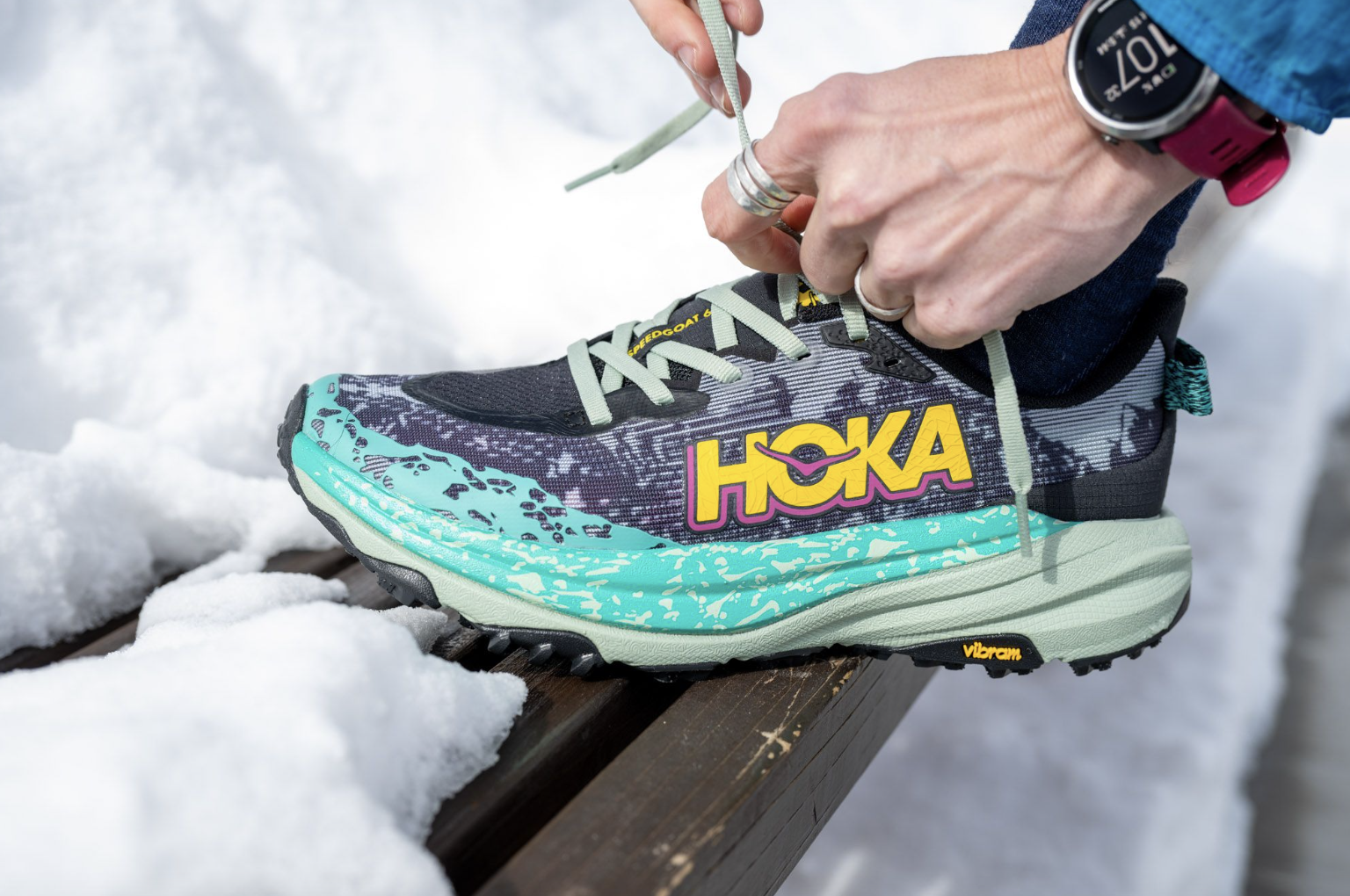
The Best Hiking Shoes of 2025
We tested and ranked the best hiking shoes for men and women for 2025, including top picks from Hoka, Salomon, Merrell, SCARPA, and more.
